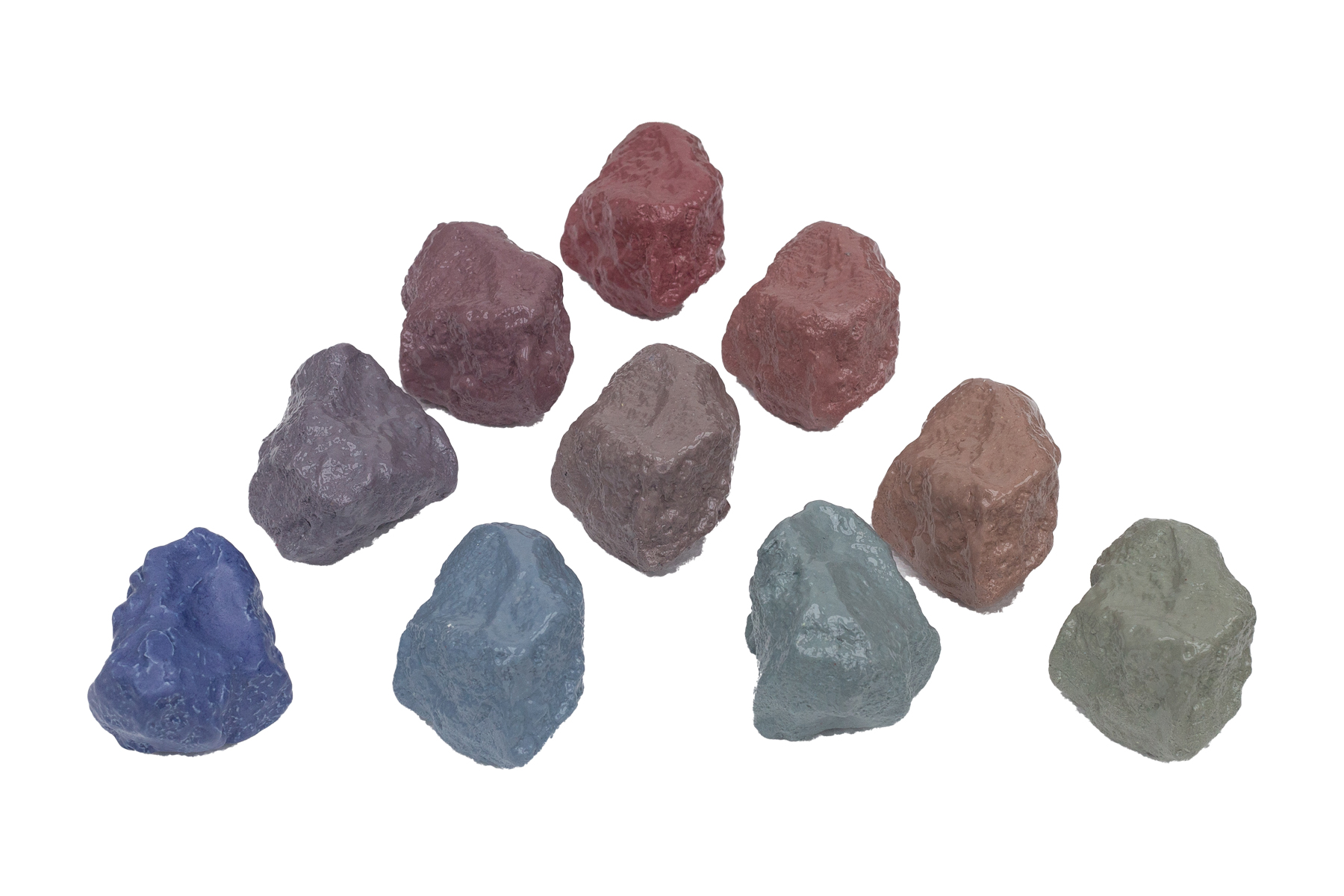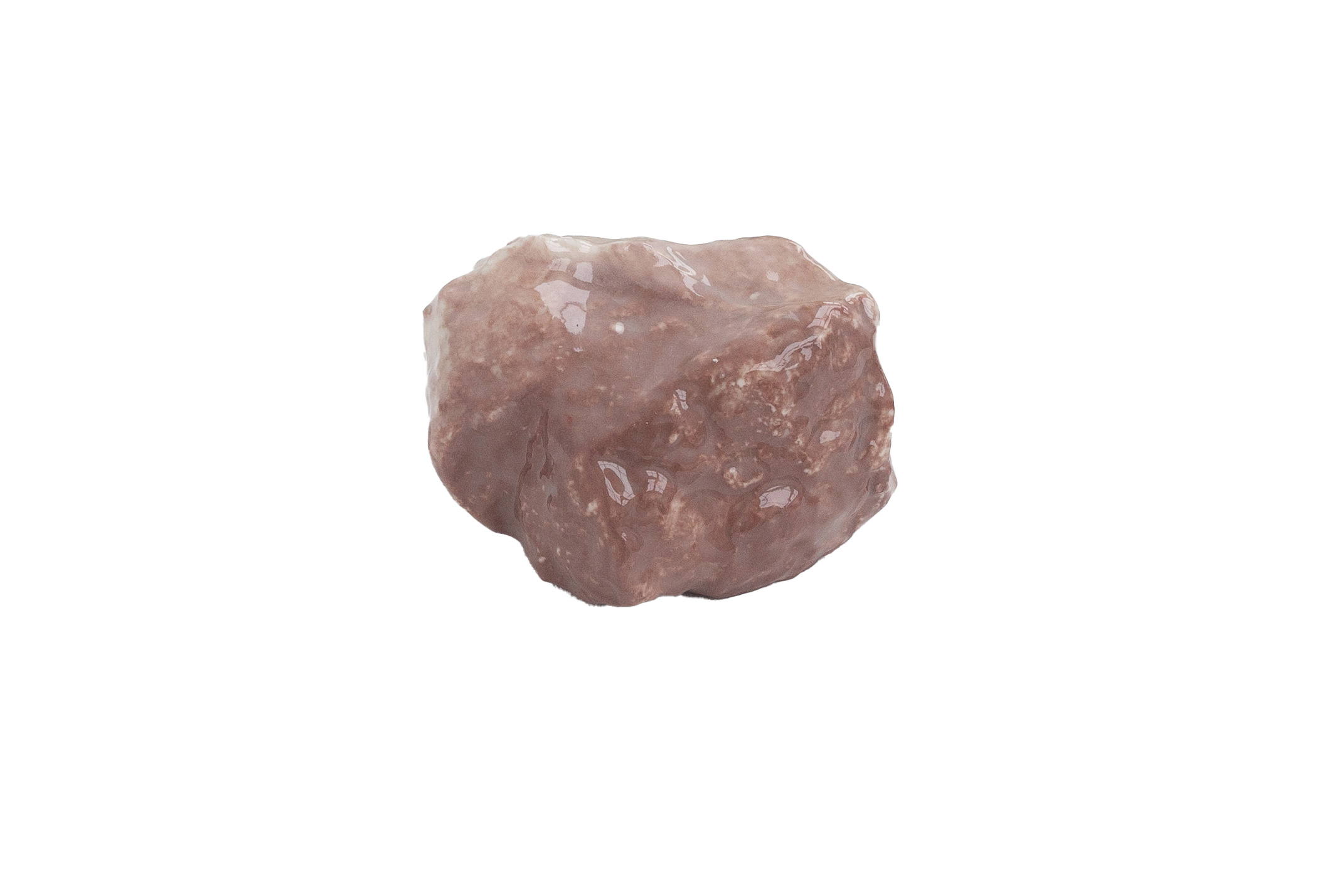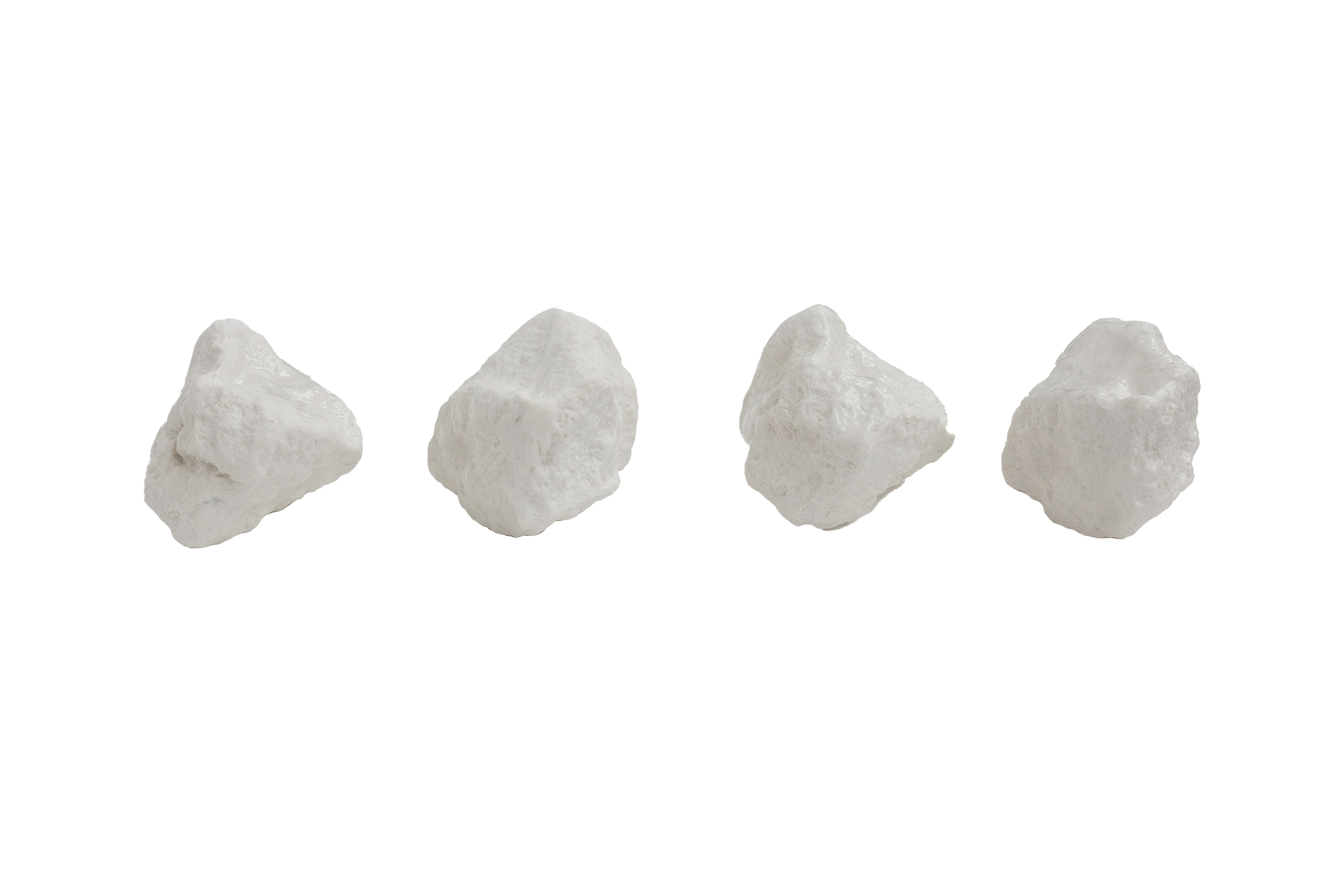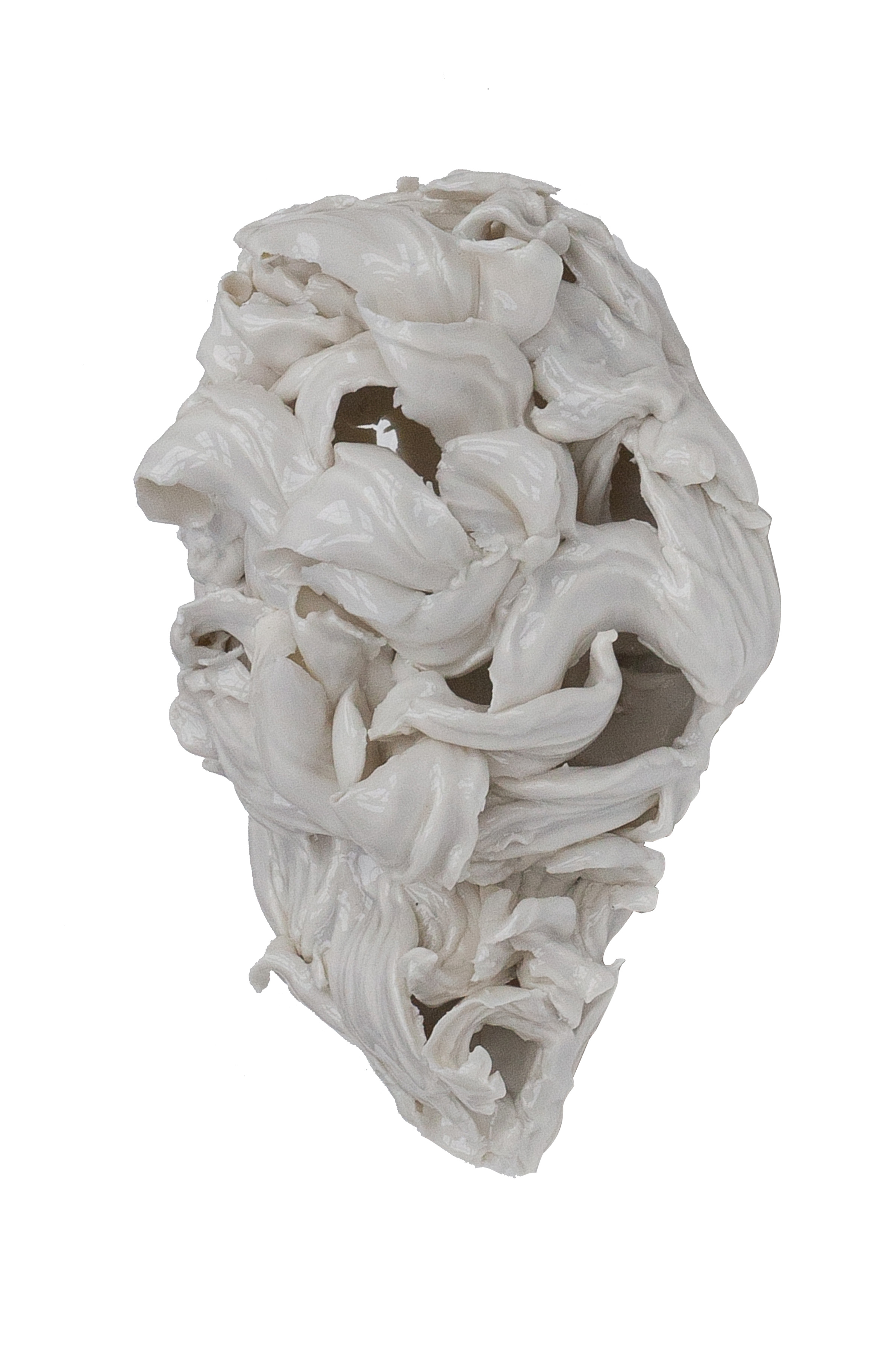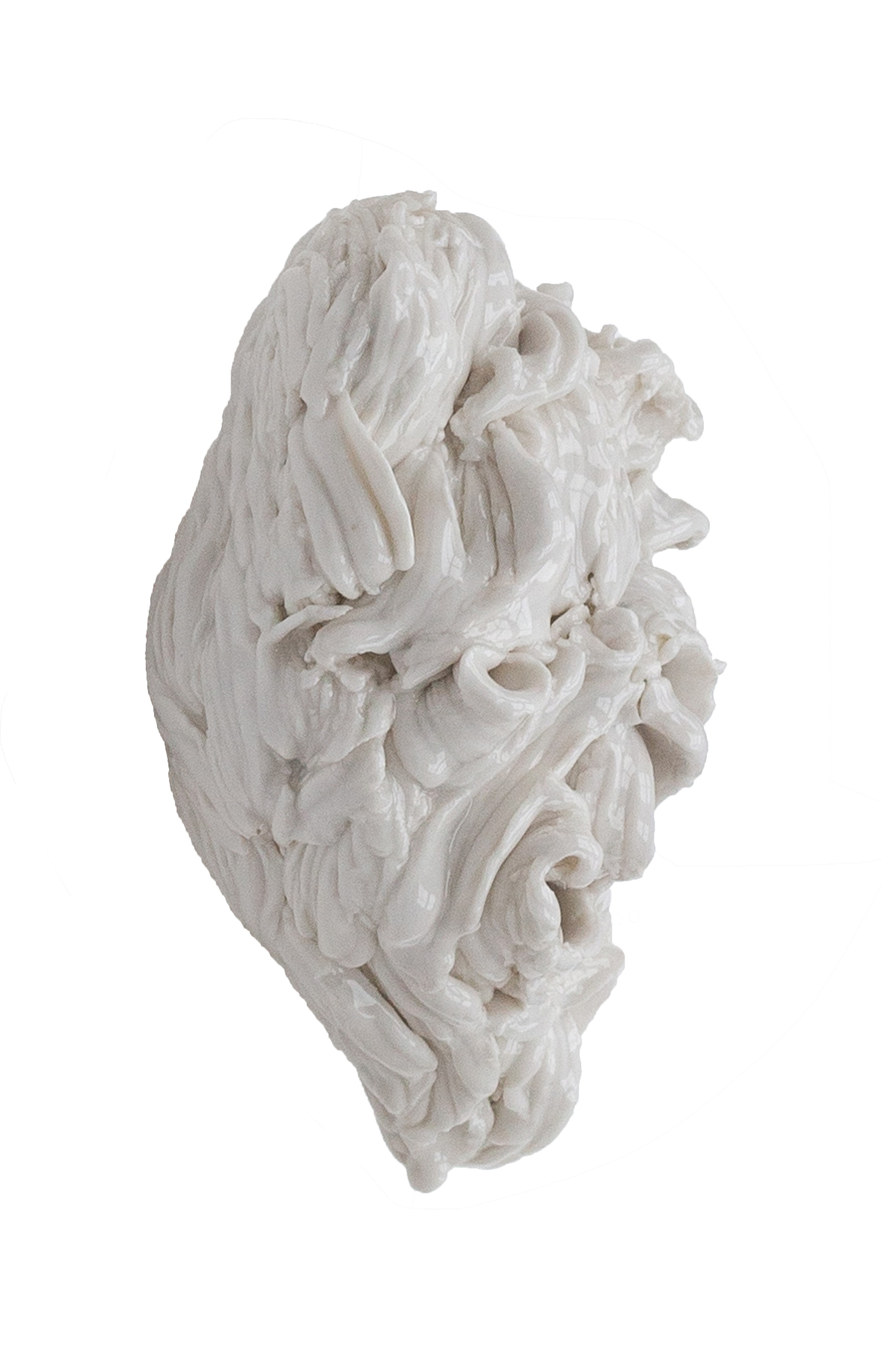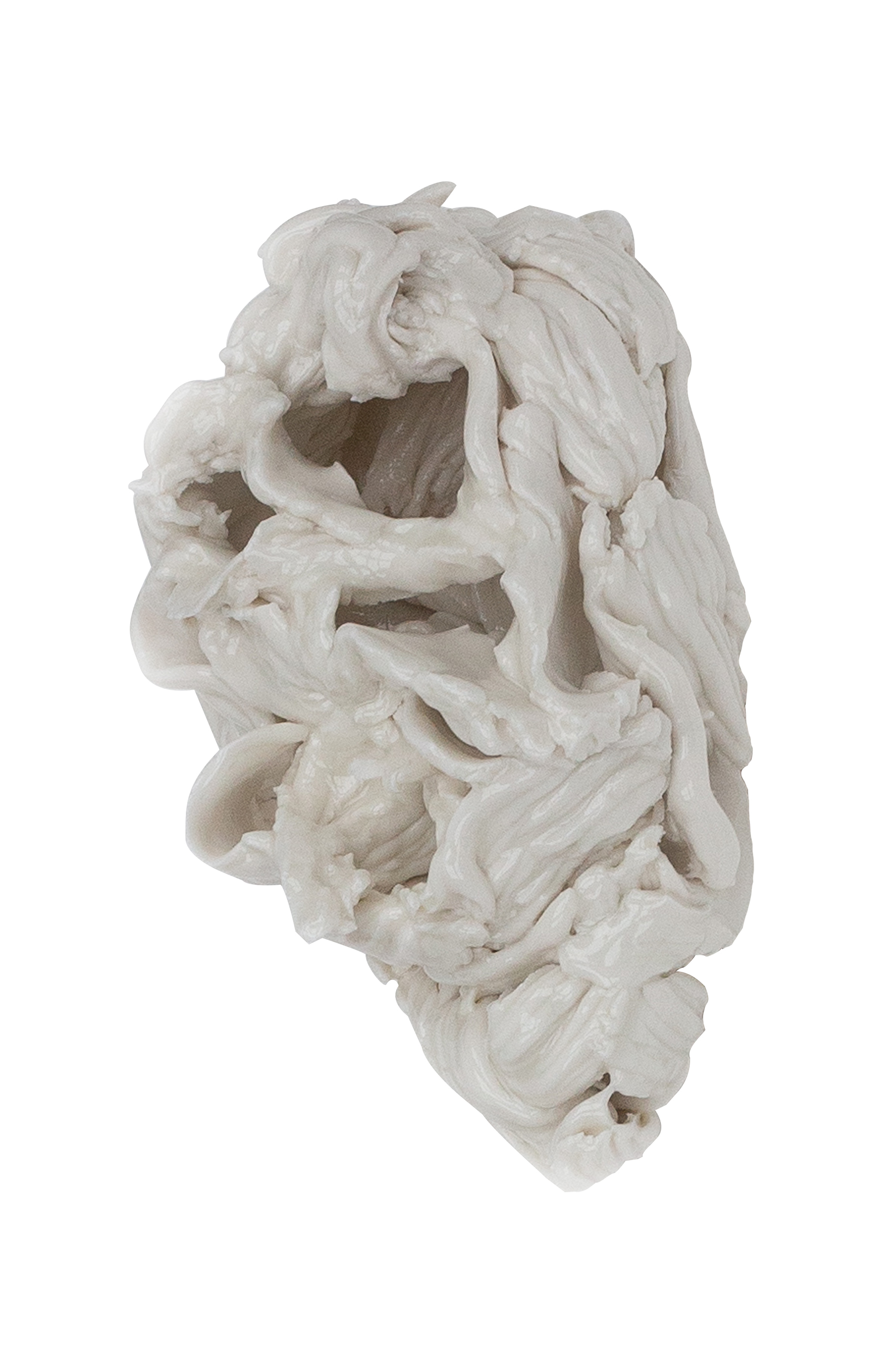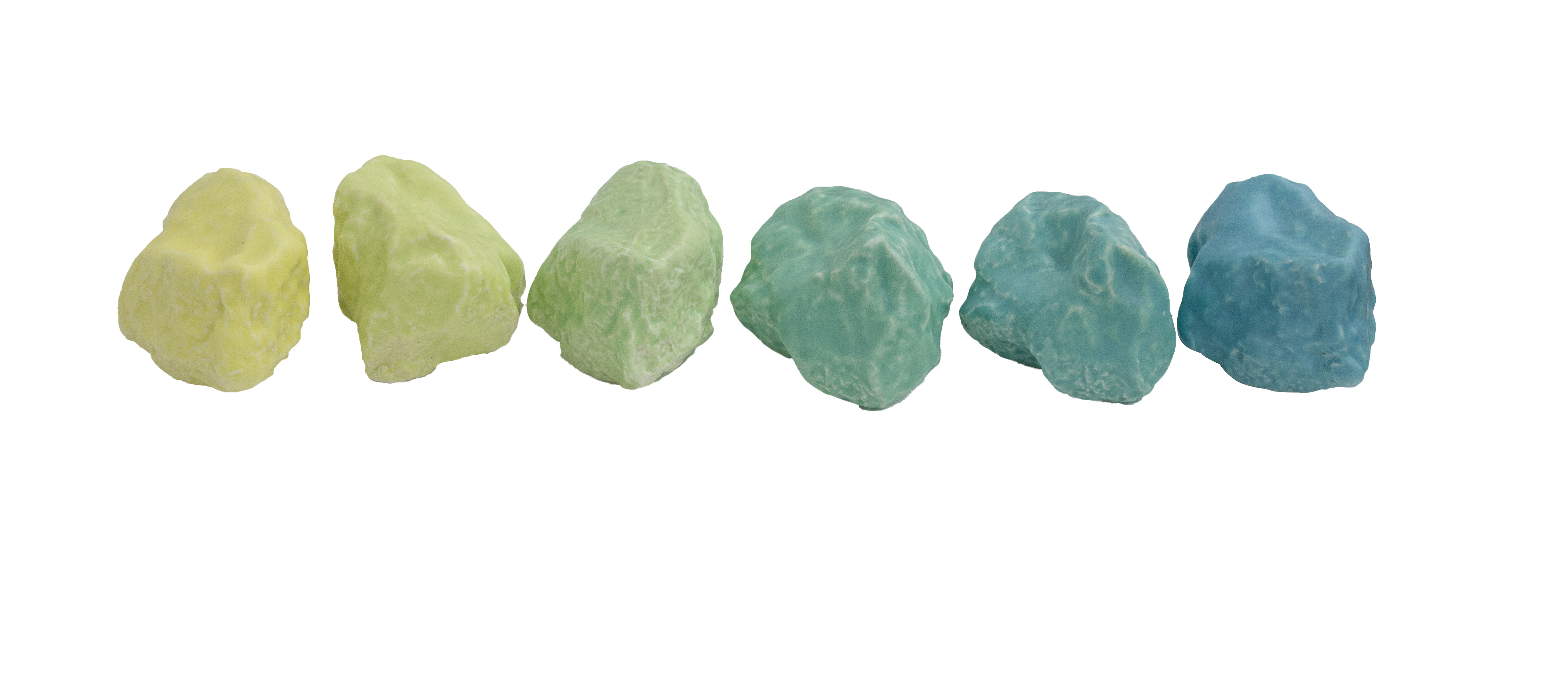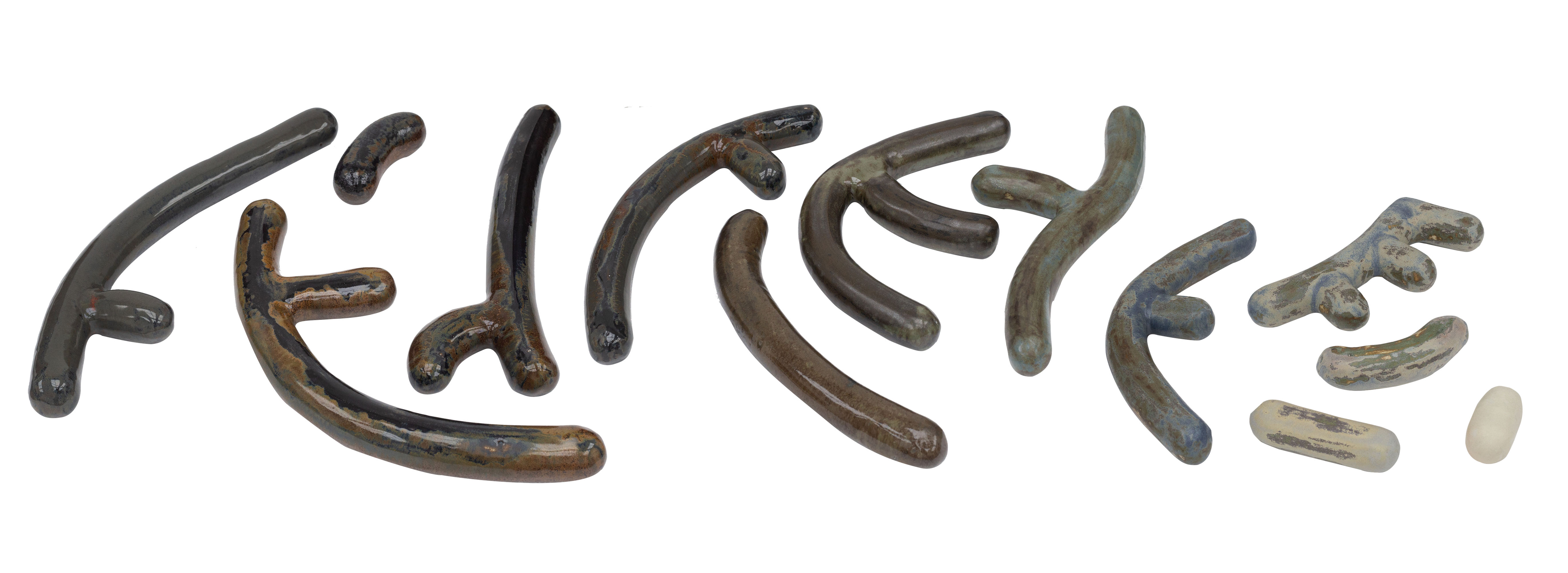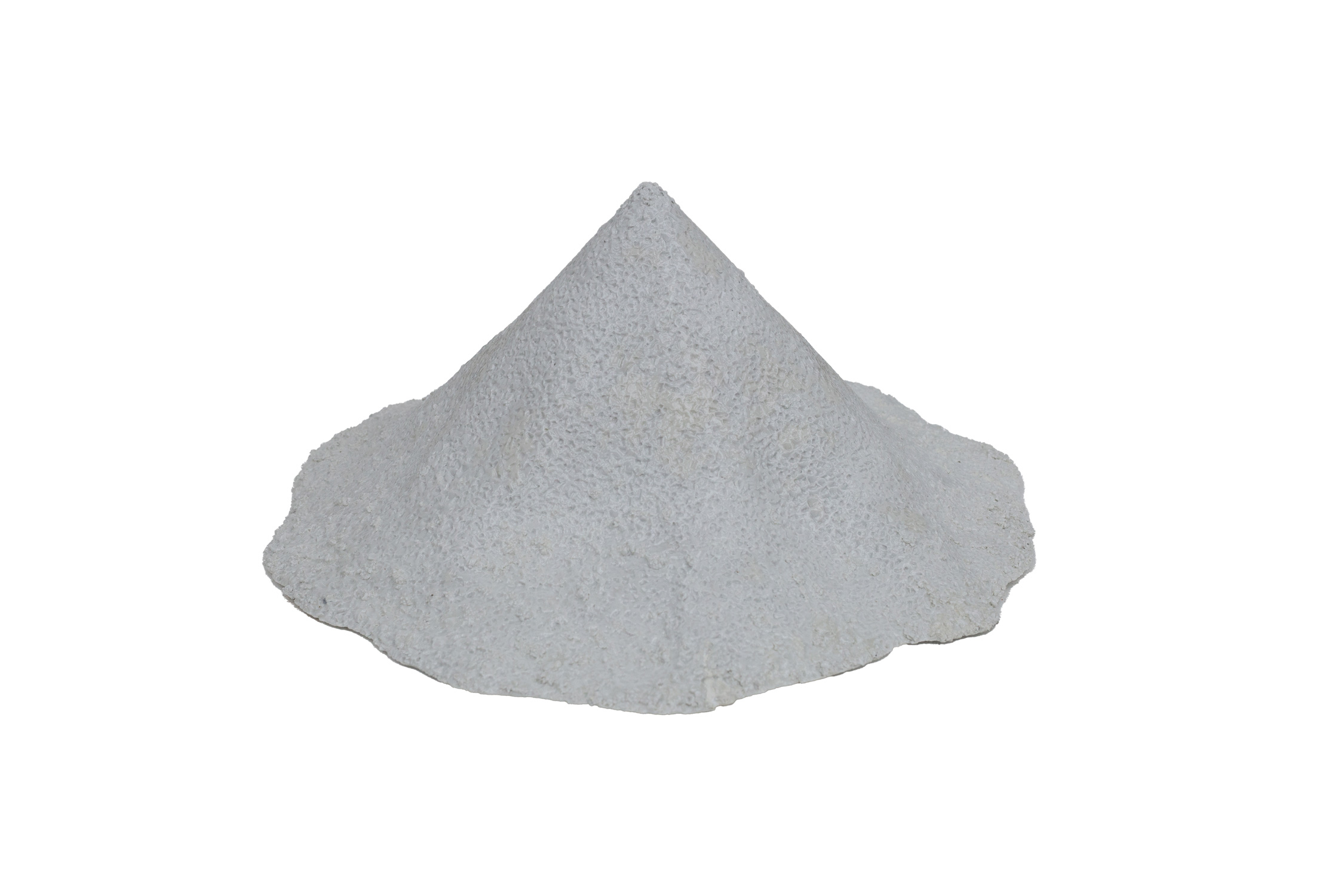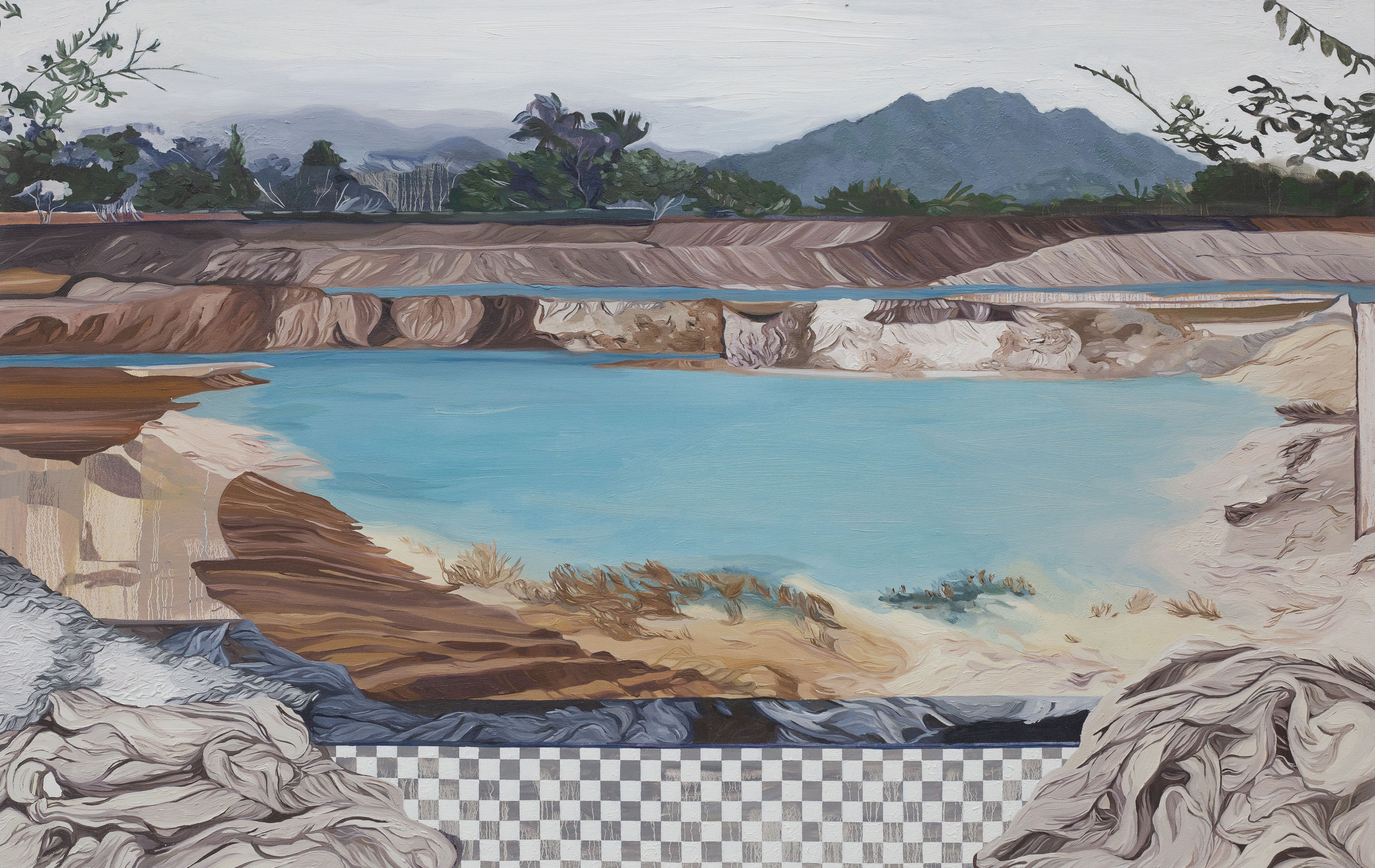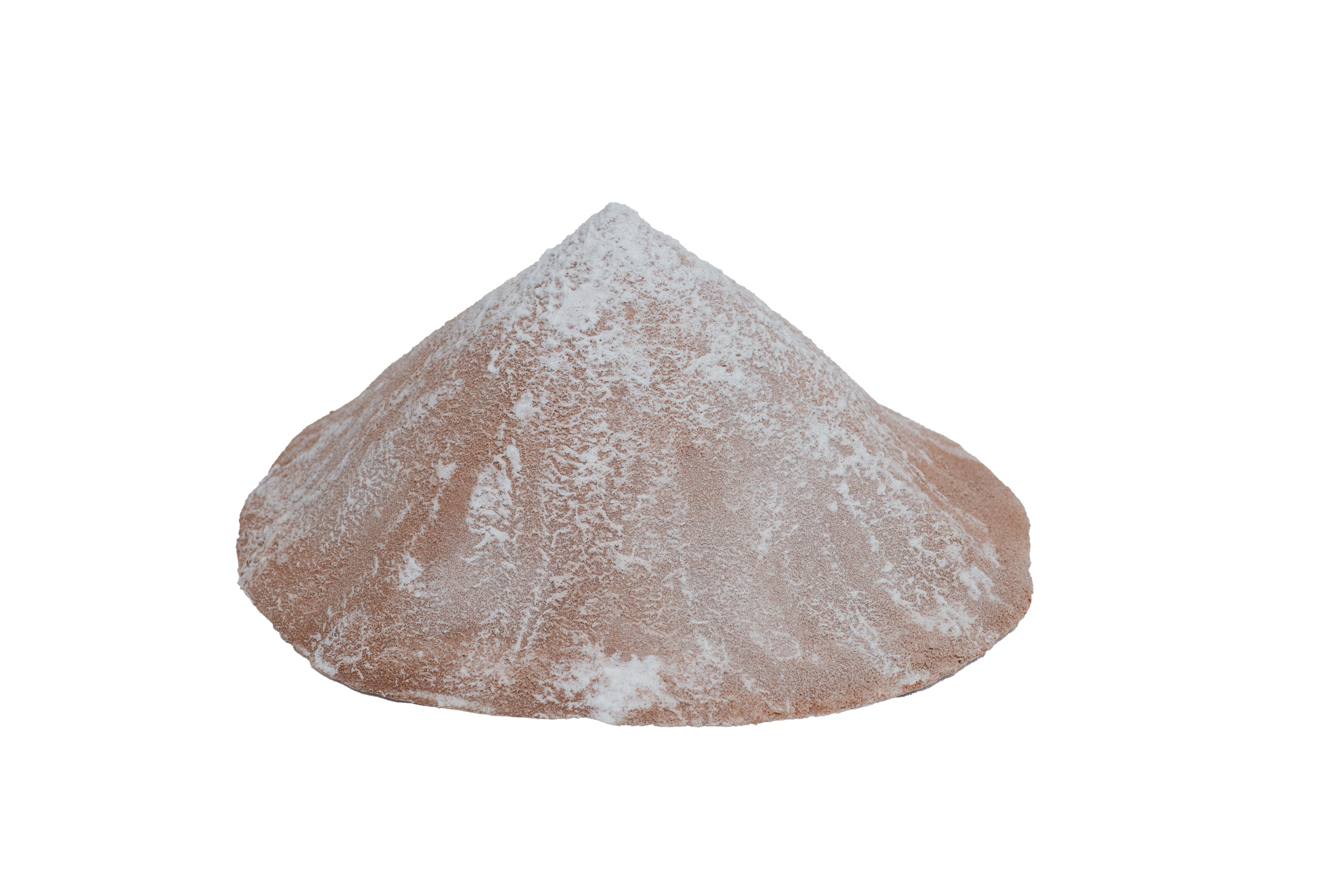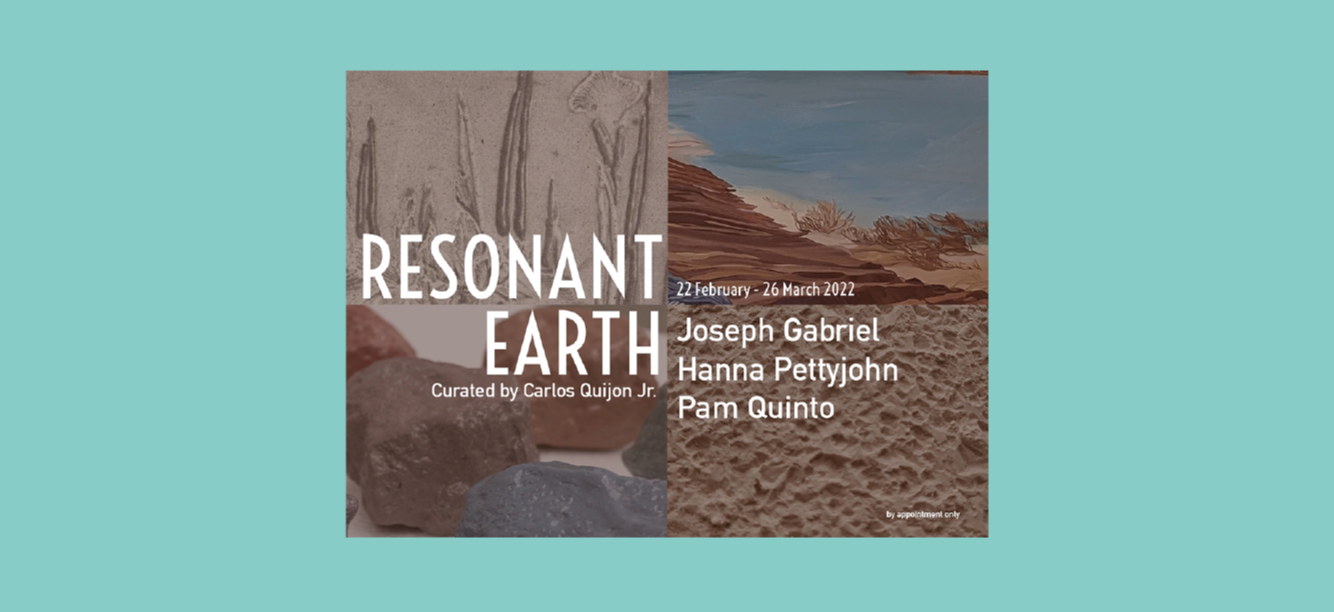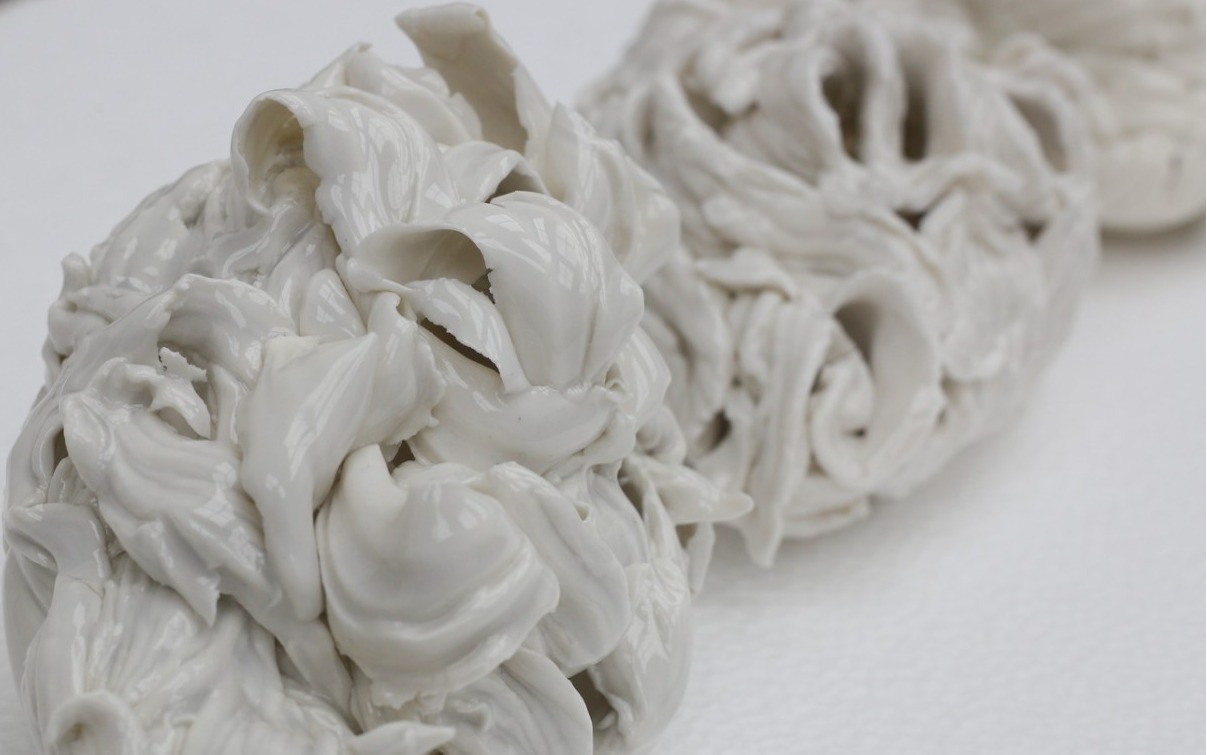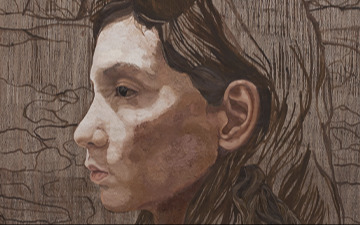
About
Presenting works by Joseph Gabriel, Hanna Pettyjohn, and Pam Quinto, Resonant Earth prospects the possibilities of contemporary ceramics in extrapolating a cosmopolitan and modernist history of craft. The exhibition takes its cue from a 1961 essay by painter Fernando Zobel de Ayala titled “The First Philippine Porcelain.” The essay historicizes the porcelain manufacturing company “La Porcelanica” which was founded by the painter’s father with the help of Japanese industry experts, and facilitated the training of Filipino apprentices. Unfortunately, the company was destroyed during World War II. Only one artifact has been documented to survive from the company: a small dish that presented “a woozy Europeanized adaptation of a traditional Japanese subject” motif and a design that “could have been done in France, England or Germany during the 1890’s.” Zobel identifies the dish as “an interesting example of Philippine craft ideals during the first decades of the twentieth century.”
From this singular object and the contexts of production to which the essay alludes, the exhibition considers the made thing and its annotation as archive. The exhibition in this sense proposes an interfacing of the artistic, art historical, and the curatorial to speculate on ceramics as contemporary form—able to problematize its own artistic history and suggest its trajectories. Working across different sites (Manila, London, Dallas), the artists’ practices embody contemporary ceramics as a cosmopolitan enterprise. Each work for the exhibition uses earth from these different locations and responds to different aspects of the medium’s technology and stylistic and material circulation.
The exhibition’s proposition is inflected by the practices of the artists involved. Hanna Pettyjohn’s work takes inspiration from the practice of her parents, Jon and Tessy Pettyjohn, pioneers of Philippine ceramics. In her two-dimensional works, she translates geological tropes such as topography, layer, texture as elements of figuration. Joseph Gabriel studied ceramics formally in London and works professionally in stoneware design. His practice is attentive to the materiality of stone and ceramics, keen on exploring possibilities of the form. Pam Quinto, for her part, uses stoneware as part of her interdisciplinary practice. In her works, ceramics converses with other forms and materialities—from texts, photographs, painting, and even scent, moss, or salt.
A series of works by Joseph Gabriel speculates on the material conditions of the dish documented by Zobel’s essay. As the essay describes the plate: “Molded dish of thin porcelain, translucent and sonant, with scalloped edge, undulant shoulders and raised foot. White body covered inside with a light grey slip and decorated with a design of iris blossoms and leaves executed in transparent mauve and blue enamels and heavy blue green and white enamels within a decorative border in the same. The outside is covered with a thick, glossy cold white overglaze.” In the series titled Fucatus, Gabriel derives a possible color story for the plate from Zobel’s annotation and archival photograph, which comes to us as a grainy black and white reproduction. Gabriel crafted glazed porcelain stones that come in a gradient from mint to bubblegum and slate gray to mauve.
Alongside these colored shards of stone is Infucatus, pearl white porcelain that references the body of the dish or the cold overglaze as described in the text. This obsessive close reading of the object is pursued in two other works that Gabriel presents in the exhibition. Studying the components of the object and deconstructing aspects of its craft, Gabriel experiments on techniques of transforming raw earth to stone. For the Memento series, the artist appropriates the floral motif of the dish and creates another ceramic form made by clumping together delicate porcelain flowers into a composite sculpture resembling a hollow stone. In Extrusions, Gabriel abstracts the plate into its most basic line elements and gives these dimension by extruding clay into tubular structures. In these works, Gabriel uses the vocabulary of ceramics as a framework for investigating its own history, form, and material.
Taking interest in the historical and geographic dimensions of the essay, Hanna Pettyjohn extrapolates an alternative history of porcelain production in the Philippines. While Zobel’s account speaks of local sources of kaolin in Makiling, Calamba, Bulacan, Pettyjohn’s research reveals that there is no existing record of kaolin mines in these locations. For her work in the exhibition, Pettyjohn leans into a speculative possibility for the Philippine ceramics industry wherein a reliable source of kaolin may be found in its vicinity. Two paintings play out this speculation. Ground/Foreground (ZM Incorporated, Calamba Kaolin) paints a fictional kaolin mine inspired by the landscape of Mt. Makiling, where the artist spent her younger years. A body of water lies at the center of the landscape, its surface still and flat green blue. This artificial body of water indicates the presence of kaolin and its unique coloration can be seen from satellite imaging as alluded to by Latitude/Longtitude (ZMI i). In juxtaposition, the two works seemingly mimic the activity of zooming in and out of digital maps: one moves closer toward the smaller work and moves away to take in the expanse of the larger work.
Pam Quinto constellates historical and discursive moments in the development of ceramics and nominates possible itineraries for thinking about its cosmopolitan character. One of the figures central in her imagination is the French Jesuit priest Francois Xavier d’Entrecolles, an industrial spy who went to China, learned about porcelain techniques, and sent his discoveries back to France in 1712. d’Entrecolles’s letters contained recipes for the production of porcelain and inspired the practice of keeping “commonplace books” that contained recipes and trade secrets. Quinto fabricates a possible commonplace book for La Porcelanica and presents “a speculative archive of what would have been recorded on Francisco Quintos’s or the factory’s commonplace book. One is a recipe for a porcelain clay body and firing instructions—a blend of information based on d’Entrecolles’s account of Chinese secrets to porcelain production, and the Japanese production method for Aritayaki porcelain. The other page is a design for a teapot, based on the La Porcelanica plate’s motif and Japanese Cloisonné Enamel vases.”
In White Gold 1 and 2, meanwhile, Quinto articulates a different entry point for the history of ceramics in the Philippines—this time the history of the Rusun Jars or Luzon jars, earthenware pots used by the Japanese for storing tea. Rusun Jars were exported to Japan during the 16th century and indexed early Philippine-Japan trade relations. Upon the rise of the popularity of Chinese porcelain and other ceramic wares, the international demand for the Jars dwindled. Soon enough the Jars were repurposed as stone lining for local salt beds. Two mounds of ceramics comprise the work. In White Gold 1, a thin porcelain mound appropriates the crystalline structure of salt. White Gold 2, on the other hand, approximates the production of salt by allowing brine to dry and grow onto a terra cotta mound, a process also called efflorescence. The oscillation between ceramics and salt enacted by the two works references the designation for both materials—porcelain and salt—as “white gold” throughout different historical and geographic moments.
From the procedure of stylistic close reading in Gabriel, to the mapping of speculative genealogies in Pettyjohn, to Quinto’s alternative itineraries of cosmopolitan craft, Resonant Earth presents how curatorial, art historical, and artistic agencies may generate discursive methodologies with which to articulate speculative possibilities for the practice and its forms. In the hands of these artists and as in the alchemical transmutation of raw clay into ceramics, earth becomes resonant—mobilized to speak to and converse with the prolific contexts of artistic agency, art historical contingencies, and the discursive conditions of imagining the future of and for Philippine ceramics.
— Carlos Quijon, Jr.
Joseph Gabriel (b. 1989, Manila; lives and works in London) is an artist working across drawing, sculpture and installation. His works examine notions of land, origin, memory and sense of place. He explores a visual language that seeks to articulate the vestigial and transformative qualities of ceramics—one which lends itself as a tactile material and the other, as intermediary to the intangible. His body of work inspects the point of tangency between transitional states, the fragmentary and the residual as emblematic responses to our world in constant flux.
Gabriel obtained an MA in Ceramics and Glass in 2019 from the Royal College of Art, where he was a recipient of the RCA Fund International Scholarship. He was an artist fellow at Guttenberg Arts in 2017, artist-in-residence at Koganecho Bazaar in 2015 and was the Philippine delegate for Visual Arts at the 2013 ASEAN Youth Camp in Singapore. He earned a BFA in Painting from the University of the Philippines, Diliman in 2013 and studied ceramics as an exchange scholar at the École Nationale Supérieure des Beaux-Arts in Paris between 2011 and 2012.
Hanna Pettyjohn (b. 1983, Manila; lives and works in Dallas and Laguna) graduated from the University of the Philippines Diliman, with a Bachelor of Fine Arts in Painting. The daughter of pioneering contemporary Filipino ceramicists Jon and Tessy Pettyjohn, she combines sculptural installations with paintings in her explorations of identity. A Filipino-American with a transnational narrative, Hanna Pettyjohn possesses firsthand knowledge of the global diaspora. Autobiographical details and “fragments of memory” inform her work, which is tinged with both nostalgia and an acute awareness of life’s transience. Through her large-scale portraits and personal photographs-turned-tactile landscapes, she conveys the vague anxiety, loneliness, and alienation that afflict the uprooted.
In 2004, Pettyjohn won first prize at the 37th Shell National Students Art Competition. She received the Cultural Center of the Philippines’ 13 Artists Award in 2015. In addition to having exhibited in Manila, Miami, Taipei, Singapore, and Hong Kong, Pettyjohn’s works are also part of private collections across Southeast Asia.
Pam Quinto (b. 1991, Quezon City) is an artist, curator, and writer. Her practice articulates a sense of intimacy and vulnerability in which remnants of memory, sympathy to the human psyche, and thematics of the feminine are seen and felt. Through an embracing attentiveness to process and intricate details, Quinto foils logics of production and objectifying material. She navigates tensions between creation and destruction by mingling craft and experiment, and subverts viewer roles through works that invite interaction and participation. Quinto’s interdisciplinary practice encompasses various mediums such as ceramics, photography, installation, text, and performance.
Quinto graduated with a Bachelor’s degree in Fine Arts, with a Major in Painting, in 2014 from the University of the Philippines, from which she received the Outstanding Thesis and the Gawad Tanglaw awards for her undergraduate thesis. In the same year, she became part of the inaugural batch of the Artery Mentorship Program organized by Artery Art Space in Manila.
She is the founder and curator of Parcel Exhibitions, a portable exhibition modality developed in response to the arts immobility caused by the pandemic. Parcel Exhibitions has also recently been selected for Para Site HK’s No Exit Grant for Unpaid Artistic Labour.
Quinto has participated in a number of group exhibitions in Manila and elsewhere, including Errant Life, Promiscuous Form (2021), at Gravity Art Space; Art Moments Jakarta; Figure-proof (2020) at A+ Works of Art; A will for prolific disclosures (2020) at The Drawing Room; Double Double, Moore in Trouble (2019) at Tin-Aw Gallery; For Every Atom Belonging to Me (2019) at the Sampaguita Art Projects; and Kabit at Sabit (2019), a one-day simultaneous presentation of multi-site site-specific projects all-over the archipelago organized by Load na Dito Projects (Mark Salvatus and Mayumi Hirano); to name the most recent.
Carlos Quijon, Jr. is a critic and curator based in Manila. He is a fellow of the research platform Modern Art Histories in and across Africa, South and Southeast Asia (MAHASSA), convened by the Getty Foundation’s Connecting Art Histories project. He writes exhibition reviews for Artforum. His essays are part of the books Writing Presently (Manila: Philippine Contemporary Art Network, 2019) and From a History of Exhibitions Towards a Future of Exhibition-Making (Berlin: Sternberg Press, 2019). He has published or have forthcoming publications in Southeast of Now: Directions in Contemporary and Modern Art, Afro-Asian Visions, MoMA’s post (US), Queer Southeast Asia, ArtReview Asia (Singapore), Art Monthly (UK), Asia Art Archive's Ideas (HK), and Trans Asia Photography Review (US), among others. He curated Courses of Action in Hong Kong in 2019, curated a will for prolific disclosures in Manila and Minor Infelicities in Seoul in 2020. Most recently he co-curated In Our Best Interests in ADM Gallery Singapore and Cast But One Shadow at the UP Vargas Museum.
Installation Views
Works
